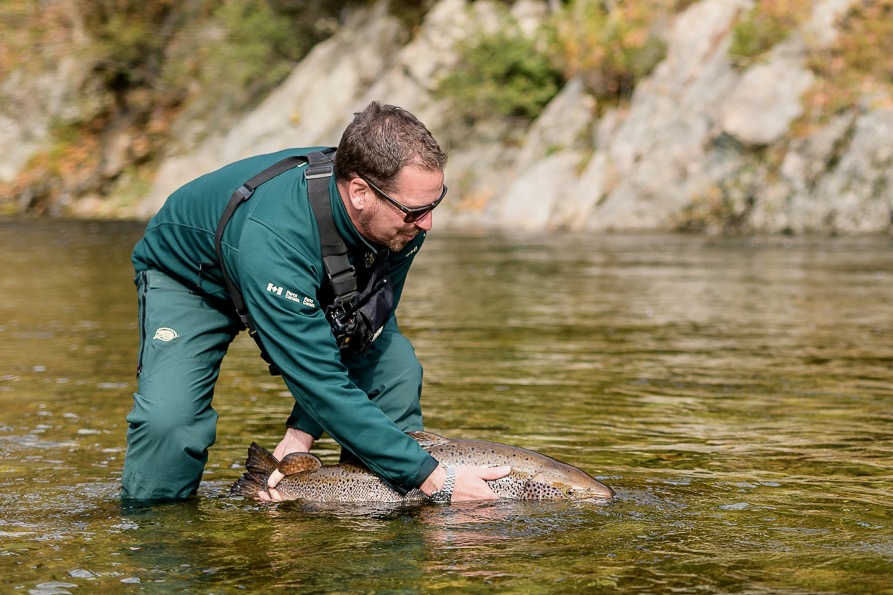
What we are seeing is a global effort to fully restore salmon runs everywhere possible. all this means restoration of wetlands. This also means full restoration of beaver populations as well. Restoration is the obvious low hanging fruit and we have seen salmon introduced into the Great Lakes..
It truly follows that coho salmon in particular can be introduced into envy fresh water body in Canada in particular. And let us not forget Siberia.
Understand that we have also mastered the art of growing young salmon and this is shown here. We can do it from the egg stage with minimal losses.
Now i want to introduce the BIG picture. All the boreal forest is post Pleistocene nonconformity, or only 12,900 years old and it is hardly in its final state.
I have already shown that tree grooming and cattle husbandry will start producing a viable soil base for both grassland and silviculture. What we have now is pine needle based high acid soils that restrain the biome. At least the beaver is in place maintaining wetlands. We need them all the way to the Rio Grande.
What we do have is the Pacific Northwest Biome which is millions of years old slowly working its way into the Coastal range and plateau regions. It can handle wetlands and bitter cold. this Biome needs to be rolled out all along the edge of the boreal Forest including all Siberia. The cultivars have all been tested in Europe and thrive so the biology works.
Recall our pine is short lived to seventy years, producing midsized saw logs. We tree farm on that basis. West coast cedar and Doug fir are good for centuries.
All of Michigan and Midwest Ontario would make an excellent West Coast Biome in the river bottoms and it can all be worked back into the boreal forest,
Scientists are trying an all-new approach to saving Atlantic salmon in N.B.’s Bay of Fundy. Will it work?
April 30, 2024
SURVIVAL TACTIC
An all-new approach to saving endangered Atlantic salmon is underway in New Brunswick’s Bay of Fundy. Will it work?
A mature Atlantic is released back into its home river in Fundy National Park (Photo: Parks Canada)
As I wind down the beat-up blacktop into Dark Harbour, a sheltered cove on the northwest tip of New Brunswick’s Grand Manan Island, a small fish farm comes into view. It’s not a surprising sight, as aquaculture operations are common here in the Bay of Fundy. But these aren’t your typical floating salmon cages—instead of farmed fish destined for the market, they’re filled with wild Atlantic salmon captured months earlier from two fast-flowing creeks in Fundy National Park, 230 kilometres by road to the east.
Celebrating its 10th anniversary this year, the Wild Salmon Marine Conservation Farm is the first project in the world to collect young fish from the wild, raise them in an ocean environment, then release them back where they came from. It’s all part of a multi-pronged restoration plan to bring the inner Bay of Fundy’s endangered salmon population back from the brink of extinction.
Judging from what I learned while visiting the farm last July, it appears as though the plan is having a positive impact on a salmon population that has been struggling for a long time. And it could even prove to be a model for restoration efforts elsewhere…
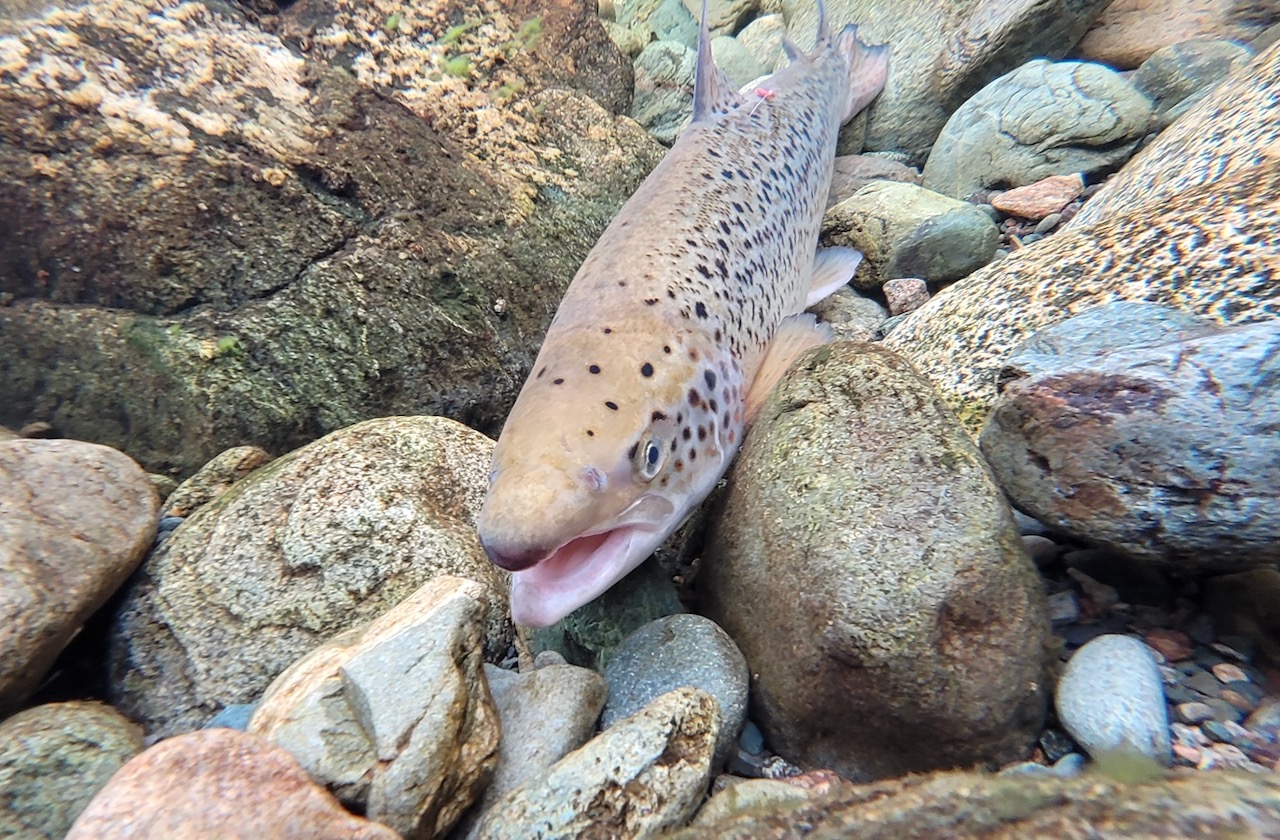
The salmon farm in Dark Harbour prepares fish for their return to the wild
HISTORICAL DECLINE
In the early 2000s, scientists at Fundy National Park realized they had a big problem. The number of adult Atlantic salmon returning to the park’s rivers had gone from around 1,000 in the 1970s to nearly zero by the mid-1990s. From an ecological standpoint, that would be concerning anywhere. Making matters worse, though, the fish were part of the inner Bay of Fundy sub-population, a group with a distinctive life cycle. And the decline was happening all up and down the coast.
At its peak back in the 1960s, the inner Bay of Fundy’s salmon population numbered approximately 40,000 adults, but less than 250 remained by 1999. With the entire population facing extinction, the fish were listed as endangered under the Species at Risk Act in 2003.
What could the park do? The obvious Band-Aid fix—releasing hatchery-raised parr into the park’s rivers—yielded statistically poor results. The survival rates were low, and if fish were drawn from other genetic stock, they lacked the lineage of the park’s historical population. So, park managers came up with a novel solution: with help from community and industry partners, they’d grow their own wild fish.
Park managers came up with a novel solution: with help from community and industry partners, they’d grow their own wild fish
The thinking behind this plan is tied to the unique characteristics of the park’s salmon population. Most anglers know the Atlantic salmon life cycle—they’re born in a stream, growing from eggs to alevins to fry to parr to smolts before heading out to sea. After maturing into adults at sea, they return to their home river to spawn. For most Atlantic salmon from North America, the metaphorical journey to maturity takes place during a real journey from the rivers they were born in to the waters off Greenland’s coast. But for the inner Bay of Fundy population, that trip is much shorter—they mature in the Bay of Fundy or the Gulf of Maine, much closer to home.
So, why were Fundy National Park’s salmon dying before they made it home, leading to the population crash? Fisheries played a part, although there’s been no commercial salmon fishery in the area since 1984, and no recreational fishery for this particular population since 1990. And the decline continued after those closures, so fisheries obviously weren’t the only factor. Neither was industrial activity entirely to blame—the coast above Saint John has some of the least-developed shoreline in southern Canada.
Whatever the cause, the situation was dire, with conservation efforts in the early 2000s doing little to stop the decline. So, the park’s scientists began looking at new ideas. Enter the plan to “kidnap” young salmon from the wild, then return them once they’d grown bigger and stronger in captivity.
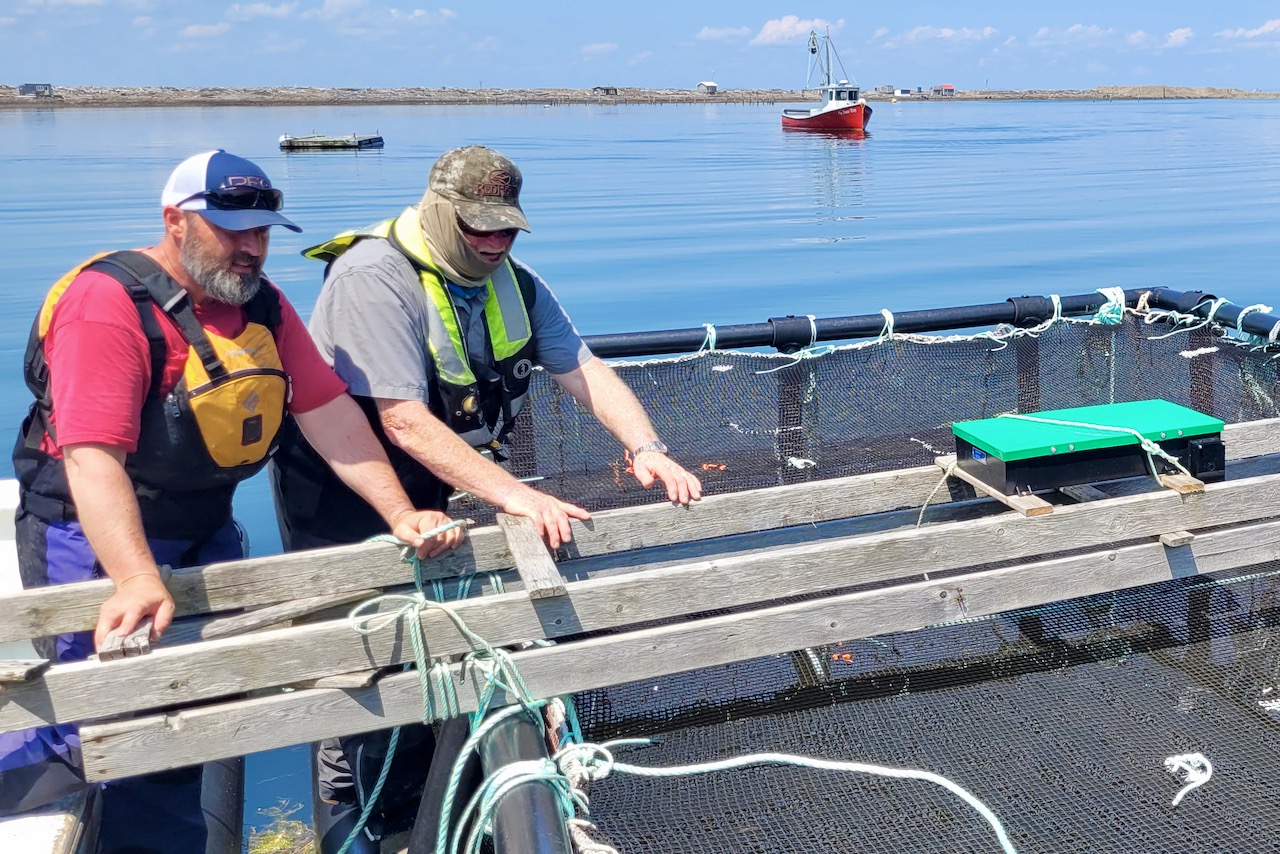
The salmon farm in Dark Harbour prepares fish for their return to the wild
RESTORATION PLAN
The plan to restore Atlantic salmon in Fundy National Park actually includes two processes, says Danielle Latendresse, the program stewardship coordinator with the Fundy Salmon Recovery project. The first is the preservation of the unique genetics of the park’s salmon population with the creation of a live gene bank.
“Each spring, we release thousands of tiny unfed fry into a nursery system or ‘In-River Live Gene Bank’ called Dickson Brook in Fundy National Park,” Latendresse says. “It’s our goal for these fry to have their first meal in the wild, grow naturally, and be subject to natural selection to lessen captive-rearing impacts. Once these salmon become parr, ecologists electro-fish the brook and bring those salmon to our hatchery, where they are eventually spawned as adults and their offspring continue this loop.”
Meanwhile, the second process, the “kidnapping,” is meant to restore salmon abundance and severed ecosystems, Latendresse says. That starts with an electrofishing operation in the waters of the Upper Salmon and Point Wolfe Rivers. Temporarily disabled smolts are removed and taken to the wild salmon conservation farm in Dark Harbour, where they spend the next 18 months before being released back to park rivers as adults.
It’s a species that without human intervention, and without something being done, will disappear forever
At the farm, a wide range of groups have come together for this conservation initiative, including Fisheries and Oceans Canada, Fundy National Park, the Canadian Rivers Institute, regional and provincial governments, the Atlantic Canada Fish Farmers Association, universities and two other particularly important partners: Fort Folly First Nation and Cooke Aquaculture.
Cooperating with the park and sharing the same aquaculture resources, the Fort Folly band runs its own habitat recovery program on the Petitcodiac River. Cooke Aquaculture, meanwhile, has been raising salmon on the Fundy coast for more than 30 years, making the privately owned company a vital partner in running the Dark Harbour facility.
On some days, there’s not much activity at the site, just check-ins from local staffers. On the day of my visit, the floating facility was a swarm of activity, with helpers from various partner organizations capturing fish from the floating cages and measuring them. Each fish has an individual electro-tag, and once the data has been recorded, the fish are put back in the pen.
Since the cages are floating in the open ocean, the salmon are exposed to the same natural seawater they’d encounter in the real world, rather than an artificial hatchery environment. They also get to snack on organisms that flow their cage, all the while maintaining their survival instinct to steer clear of danger. When aquaculture divers enter the cages for cleaning sessions, for example, the fish swim off, alarmed, unlike the dumbed-down and domesticated salmon usually found on fish farms.
Still, there have been challenges to sort out, the biggest one being how to effectively feed fish that grew up in the wild. “They have never seen a commercialised pellet,” says John Whitelaw, a species-at-risk ecologist with the park. So, the scientists had to figure out the right nutritional blend of food and a feeding schedule, among other factors, to ensure the salmon received proper nutrition yet retained their wild traits.
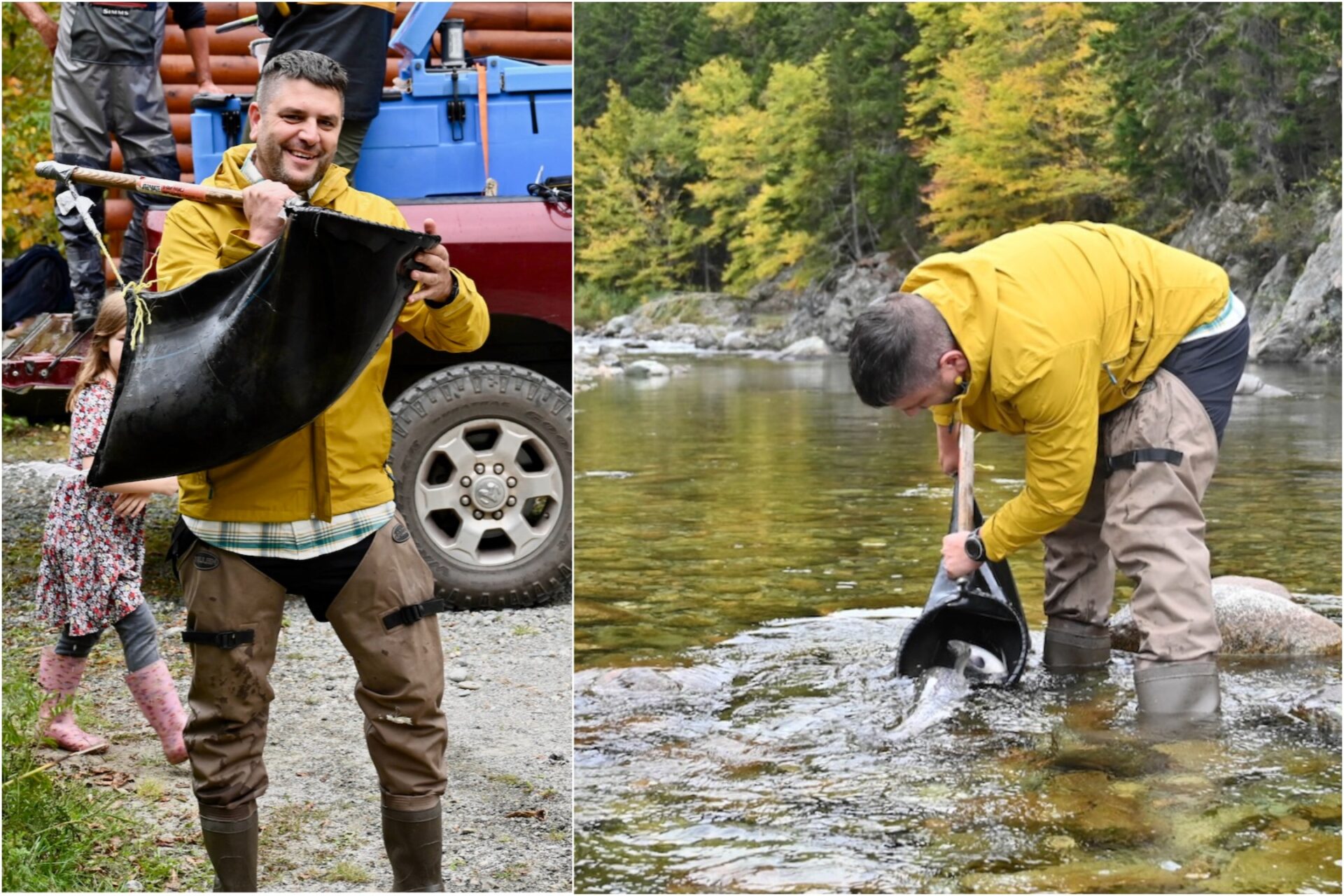
The author helps return mature salmon to their home streams in Fundy National Park (Photo: Parks Canada)
SIGNS OF HOPE
Each fall, adult salmon from Dark Harbour are returned to the streams where they were kidnapped, trucked in tanks instead of having to swim hundreds of kilometres up the coast. Even this seemingly simple part of the program is based on hard lessons learned from past years. When you’re transplanting hundreds of wild fish from a saltwater to freshwater environment, how do you prepare them for the change? Or should you? Every minor detail has to be carefully considered.
That’s where my interaction with the salmon ended last year, joining a kids’ conservation club, a representative from a Mi’kmaq band and a handful of park staff to release fish into the same streams they’d come from months earlier. Some of the salmon immediately powered off into the current with strong flips of their tails; others tentatively huddled near boulders for a few minutes before adapting to their return home.
While it’s still relatively early days in the restoration efforts, there is definitely hope on the horizon. Already, Whitelaw says the researchers are seeing short-term improvements in the fish themselves due to changes in the rearing program. Measurements of the size, body fat and overall condition of the fish, he says, shows the scientists are solving the challenges of growing wild fish into healthy adults, complete with a better chance of surviving once they’re returned to their natal streams.
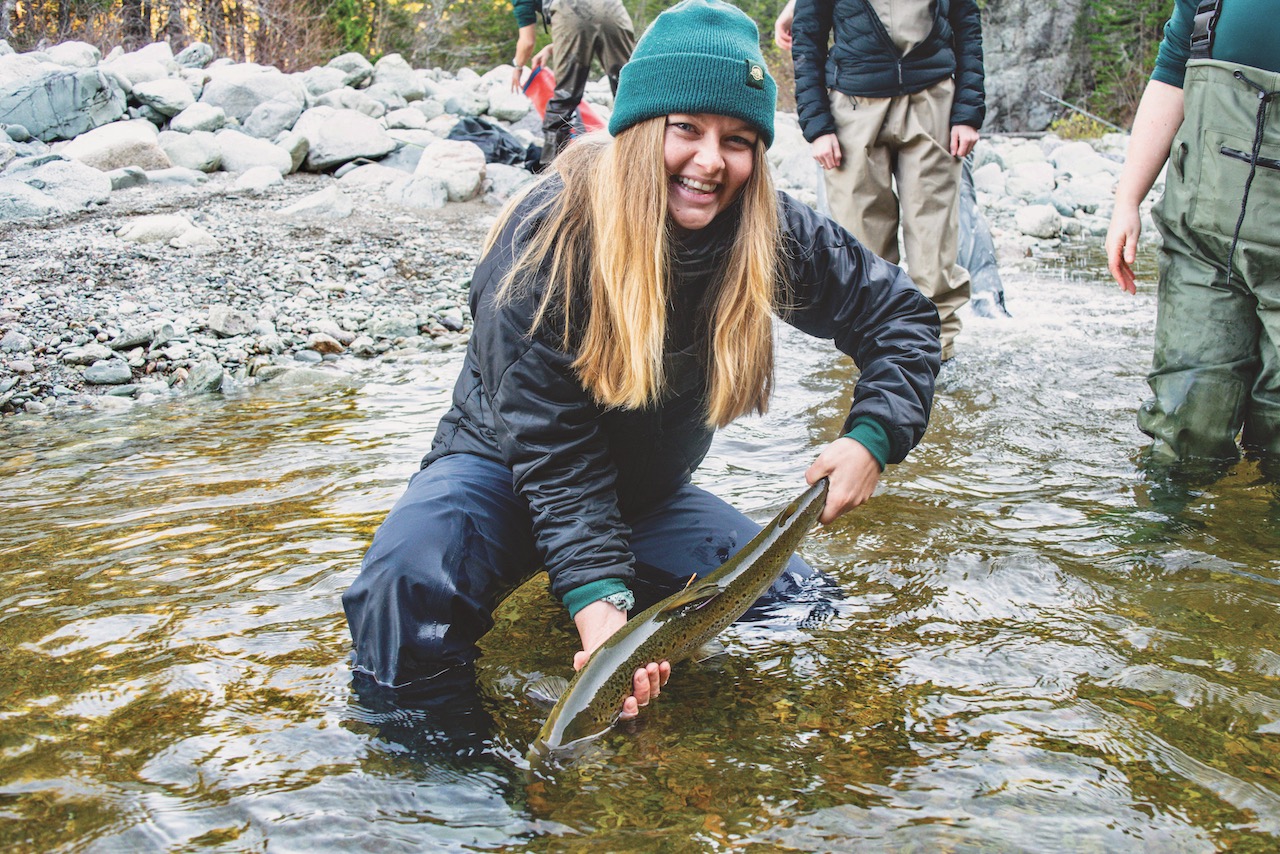
Researchers are seeing short-term improvements in the fish, thanks to the new rearing program (photo: Parks Canada)
Surveys of the park’s returning adult salmon populations, in fact, show more fish are surviving their trips to sea and returning to spawn since being exposed to the ocean in the controlled environment of Dark Harbour. In 2021, for example, more than 100 of the endangered fish returned to Fundy National Park rivers, the highest number recorded since 1989.
Does that mean the inner Bay of Fundy salmon will eventually see a population boom, leading to a return to recreational angling? Considering the numbers the researchers are aiming for in the near future—hundreds of fish returning each year, not thousands—a sportfishery seems unlikely in the short term. But the way Whitelaw sees it, the restoration project is necessary if we ever hope to see inner Bay of Fundy salmon populations return to their historic highs.
“It’s a species that without human intervention, and without something being done, will disappear forever,” Whitelaw says. “I think it is our responsibility as stewards of the rivers and stewards of the environment to at least try something to restore those populations for generations to come.” Time will tell if that intervention has been enough.
No comments:
Post a Comment